A "Secondary Dominant" chord is defined as any seventh chord built on a scale root that is diatonic to the key that resolves up a perfect fourth or down a perfect fifth to a full diatonic chord. These chords function as a dominant (V) chord to the next chord, serving to temporarily tonicize the following chord.
A Secondary Dominant chord is defined as any seventh chord built on a scale root that is diatonic to the key that resolves up a perfect fourth or down a perfect fifth to a full diatonic chord. These chords function as a dominant (V) chord to the next chord, serving to temporarily tonicize the following chord.
Available for Premium Site Access Plans Only

A Full Diatonic chord in this context is any chord in the key that has it's Root and Chord type in the scale.
Secondary chords are a type of altered or borrowed chord, chords which are not part of the key the piece is in. They are by far the most common sort of altered chord in tonal music. Secondary chords are referred to by the function they have and the key or chord to which they function. Conventionally, they are written with the notation "function/key". Thus, the most common secondary chord, the dominant of the dominant, is written
V/V
and read as five of five
or the dominant of the dominant
.
EXAMPLE: In the Key of C Major or Key of C Minor this is D7 the II chord typically a minor or diminished chord type now a Seventh chord resolving to the V , the dominant chord of the key — a V of V .
The Major or Minor triad on any diatonic scale degree may have any secondary function applied to it; secondary functions may even be applied to diminished triads in some special circumstances. (wikiwand);
For any secondary dominant chord an expansion substitution for the V , its II chord can also be preceded it for a II V of V .
Secondary Dominant chords fall under the Partial Diatonic harmonic principle and are labeled as such.
Here are the possible Secondary Dominant, V of V chords as defined by the above definition for both Major and Minor tonalities.
VI7 V of II • EXAMPLES Key of C
I
VI7 (V of II)
II
C, Cmaj7
A7
Dm, Dm7
Cm, Cm7
Ab7
Db, Dbmaj7
Note: Major only, Minor does not fit our definition as Ab7 would resolve to Db, Dbmaj7 which is not a FUll Diatonic chord in the key of Cm.
VII7 V of III • EXAMPLES Key of C
I
VII7 (V of III)
III
C, Cmaj7
B7
Em, Em7
Cm, Cm7
B7
E, Emaj7
Note: Major only, Minor does not fit our definition as B7 would resolve to E, Emaj7 which is not a FUll Diatonic chord in the key of Cm.
I7 V of IV • EXAMPLES Key of C
I
I7 (V of IV)
IV
C, Cmaj7
C7
F, Fmaj7
Cm, Cm7
C7
Fm, Fm7
Note: Major and Minor Tonalities.
II7 V of V • EXAMPLES Key of C
I
II7 (V of V)
V
C, Cmaj7
D7
G, G7
Cm, Cm7
D7
G, G7
Note: Major and Minor Tonalities.
III7 V of VI • EXAMPLES Key of C
I
III7 (V of VI)
VI
C, Cmaj7
E7
Am, Am7
Cm, Cm7
E7
Ab, Abmaj7
Note: Major and Minor Tonalities.
The I7 II7 III7 are possible in both major and minor tonalities. The VI7 and VII7 are possible in major tonalities only.
Chained Secondary Dominant Cycles
When several Secondary Dominant chords are used in a row and resolve up a fourth or down a fifth to a seventh chord, this is called a Chained Secondary Dominant Cycle.

These Secondary Dominant chords can be preceded by there II chords.

Things can even go further with incorporating the Minor Third Substitution Principle and doing a tritone sub for the V for a II ♭II7 . These are the German (perfect 5th), French (b5), and Italian (no 5th) Sixth chords.
Secondary Dominant Cycle Examples
Here are a few chained secondary dominant examples.
- Five Foot Two, Eyes of Blue
- I Got Rhythm (Rhythm Changes) (Bridge) III7 , VI7 , II7 , V7
- Scrapple the Apple (Rhythm Changes Bridge) III7 , VI7 , II7
- Jordu contains two secondary dominant cycles in the bridge.
- Stompin' at the Savoy contains a secondary dominant cycle in the bridge starting on the IV7 chord.
Diminished Chords?
°7 vs. °7♭9
Some diminished chords are really functioning as disguised secondary dominant chords. So...
When is a Diminished Chord NOT a Diminished Chord?
To determine if a diminished chord is functioning as a disguised secondary dominant write out all four notes of the diminished chord: Example C#°7 is C# E G Bb

1) Drop each note 1/2 step ( C, Eb, Gb, B ) and make each a root of a 7th chord:
C7, Eb7, Gb7, A7
2) If the next chord is a major 7 or minor 7 chord, which if it was a I chord and the preceding chord could be its V chord. Then the diminished chord is really a 7♭9 chord — A Disguised Secondary Dominant.
C7 is the V of F • Eb7 is the V of Ab • Gb is the V of Cb • A7 is the V of D and this case Dm — with Dm the II in the key of C major and we have a winner: A7 is the V of II , A7 to Dm a Secondary Dominant.
So C♯°7 is really A7♭9/C♯
Examples in Key of C
♯I°7 (♭II) is functioning as a VI7♭9 , a V of II • Example: C♯°7 is A7♭9/C♯
♯II°7 (♭III) is functioning as a VII7♭9 a V of III • Example: D♯°7 is B7♭9/D♯
♯IV°7 (III7♭9) VII7♭9 a V of VI • Example: F♯°7 is E7♭9/F♯
♯V°7 (♭VI) VII7♭9 a V of • Example: G#°7 is D7♭9/Gx (a double sharp)
*Note: C♯°7 is the enharmonic equivalent Db°7, D♯°7 is the enharmonic equivalent E♭°7, etc... See the lesson on Enharmonic Equivalents for more information.
Additional Resources
In them spirit of TMI (Too Much Information), here are few more to consider:
Bottom Line — when a diminished seventh chord resolves to a chord 1/2 step above its root it is functioning as a disguised secondary dominant chord.
Related Lessons, Videos, Lesson Series, Songs, Books & Reference Charts, Resources & Assets, Workshops are below.
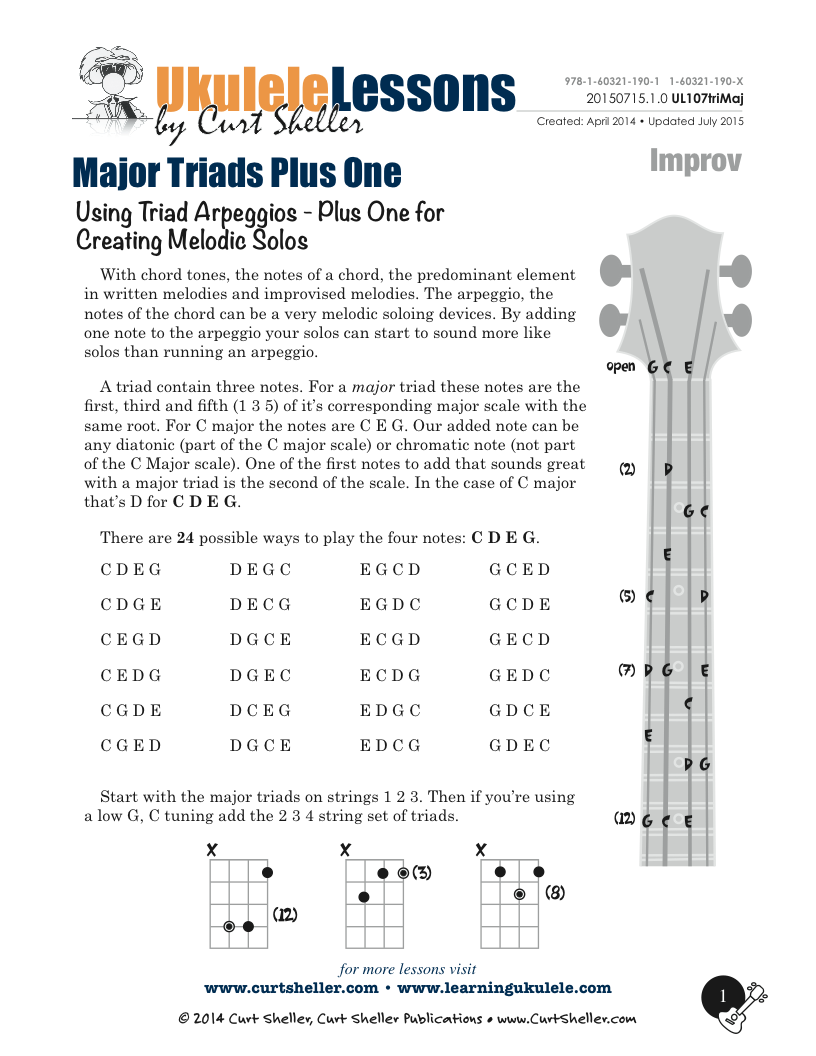
Using Major Triad Arpeggios - Plus One for Creating Melodic Solos. With chord tones, the notes of a chord playing a predominant role in writing melodies and in improvised melodies. The triad plus one additional note is a great melodic device for creating melodies - either written or improvised.
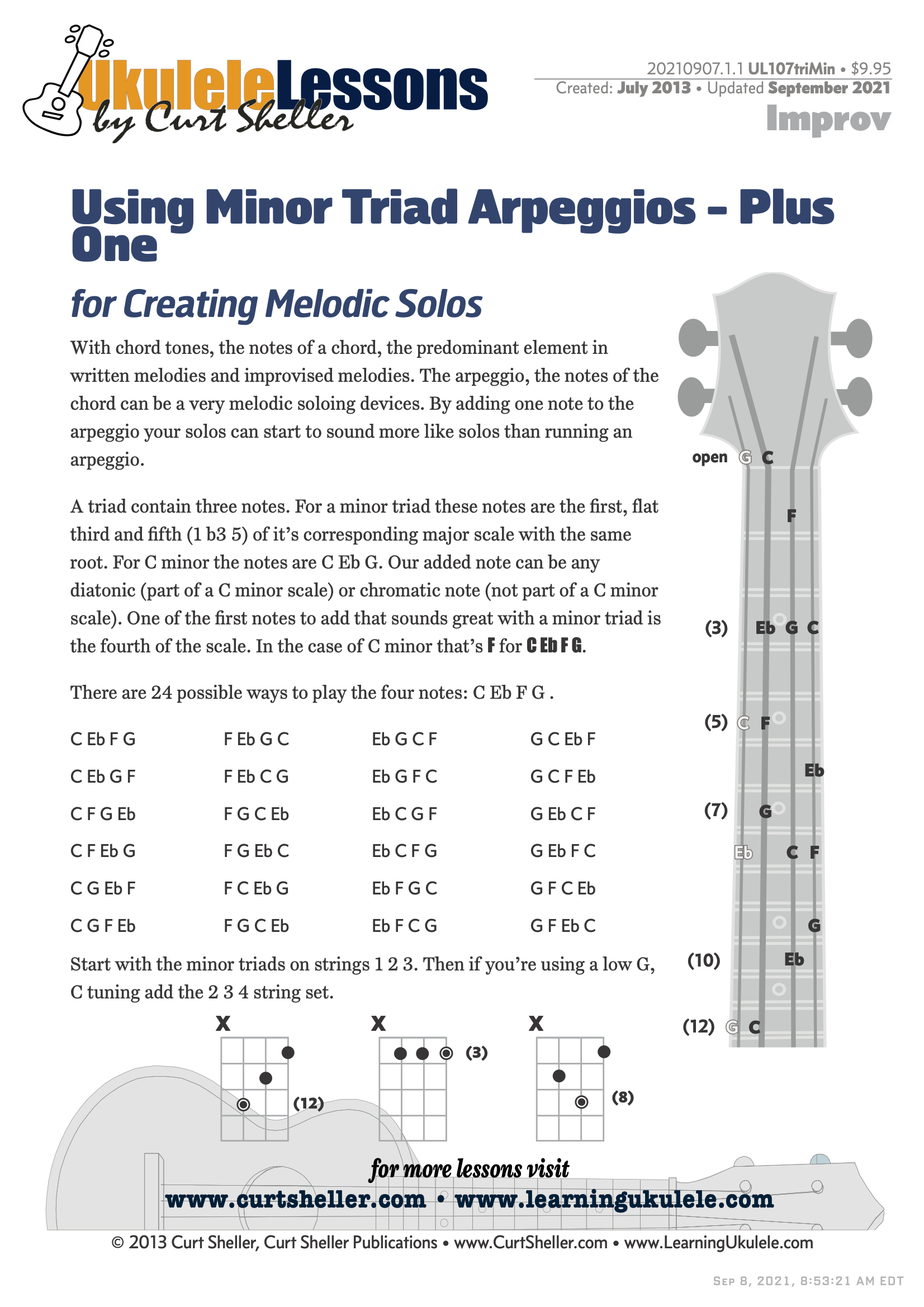
Using Minor Triad Arpeggios - Plus One for Creating Melodic Solos. With chord tones, the notes of a chord playing a predominant role in writing and in and improvised melodies. The triad plus one additional note is a great melodic device for creating melodies - either written or improvised.
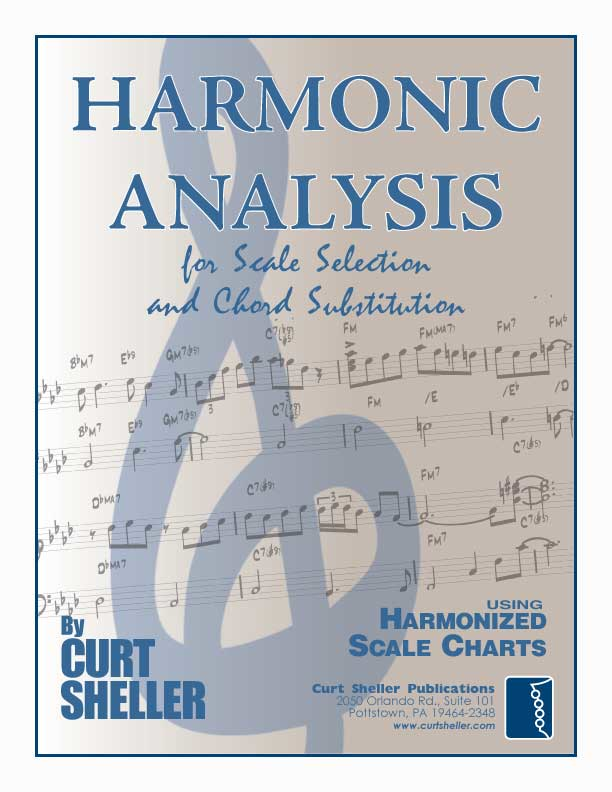
Harmonic Analysis is the understanding of the functional sequence of chords. It is the process used to analyze the harmonic structure of a progression, song or composition. This analysis is then used to make scale selections for improvisation and chord substitution.
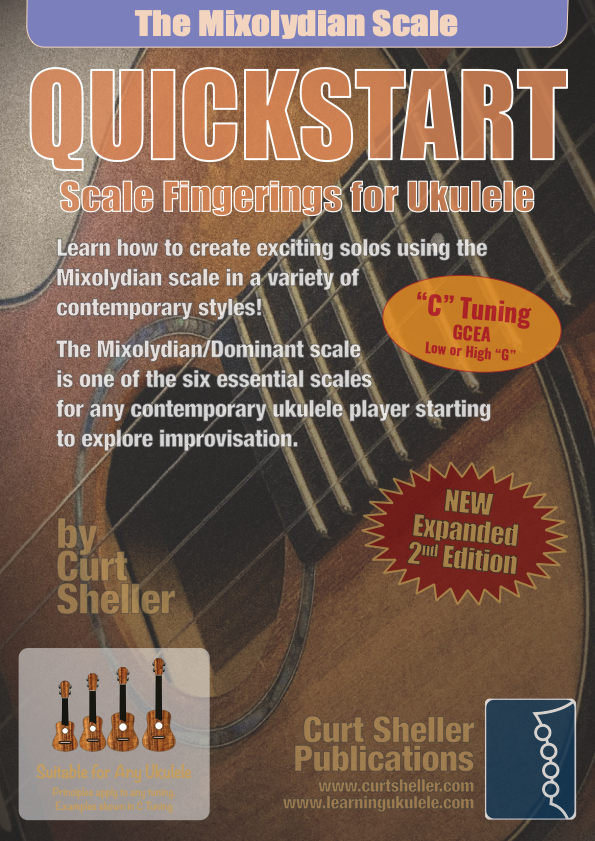
The Mixolydian or Dominant is one of six essential scales for ALL ukulele players. One octave scale fingering solutions for strings four and three and any finger with the Mixolydian scale chords are covered in all keys. Sample chord progressions for practice are included. Tunings: C with low or high G - (GCEA or gCEA). This book includes access to four studio recorded backing tracks for exploring the scale and improvisation in a variety of settings. Tracks are also great for practicing your chords against.
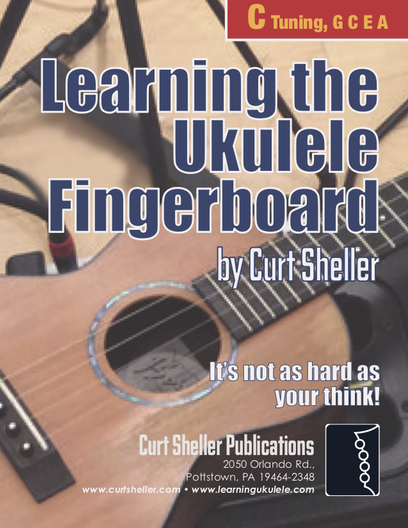

return in your investment)—it is this— learning the
f*ckingnotes of your OWN instrument. Sorry for the tough talks—but it is sooooo true!

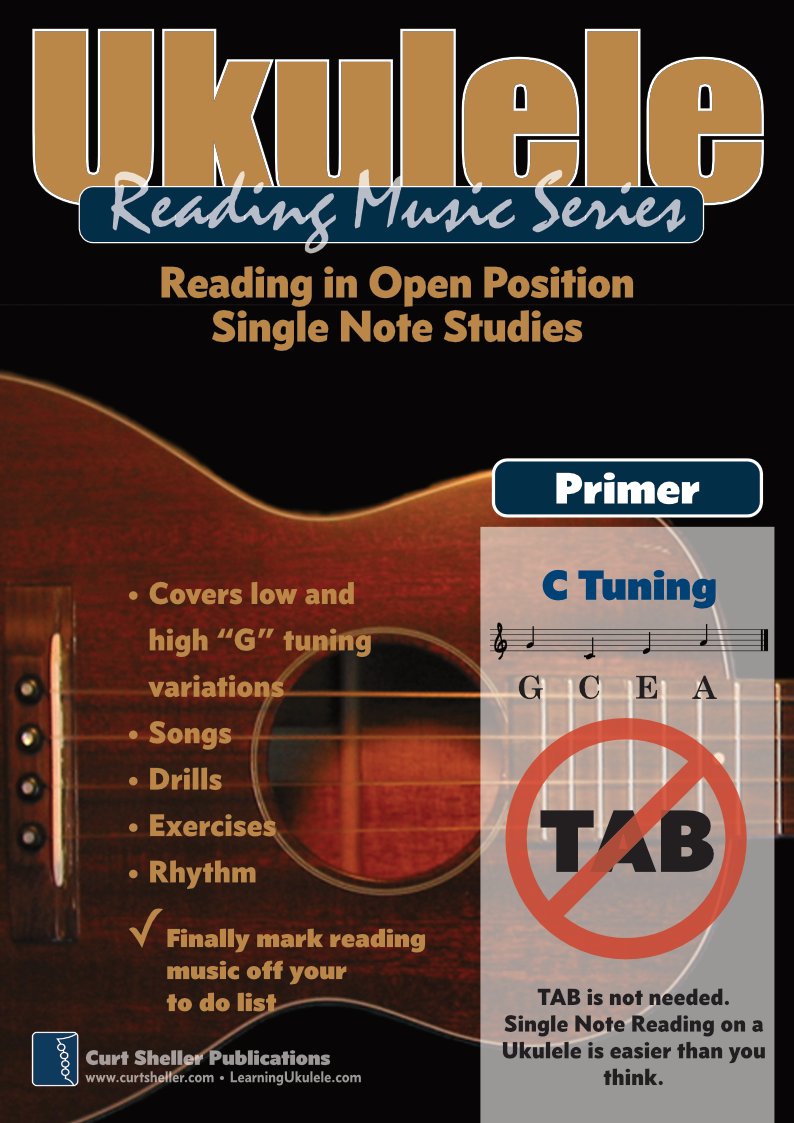
Learn to read single note melodies in the first/open position is a lot easier than you might think. Book: Ukulele – Reading Music Series – Primer
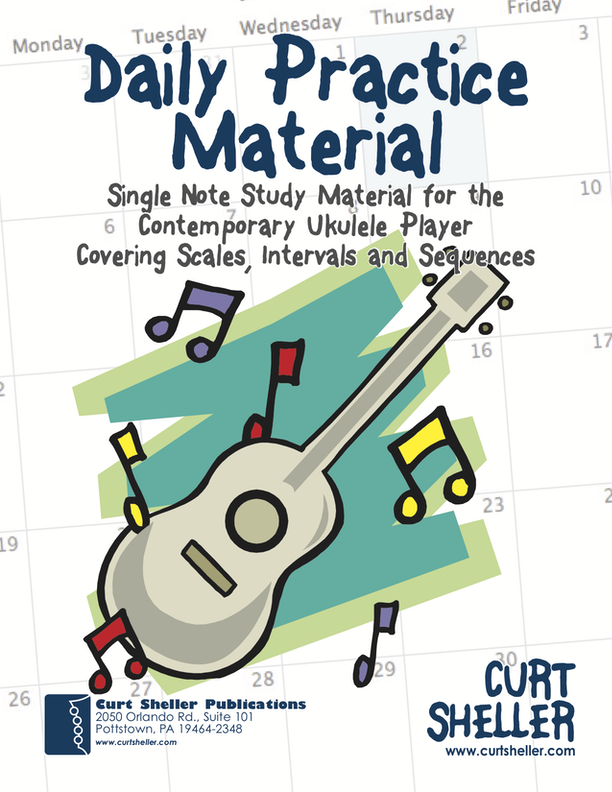
An organized collection of daily practice and reference material for the contemporary ukulele player for developing the vocabulary and knowledge necessary for single note playing. Book: Daily Practice Material for the Contemporary Ukulele
Checkout the Books & Reference Charts for additional Handy, Dandy Reference Charts.
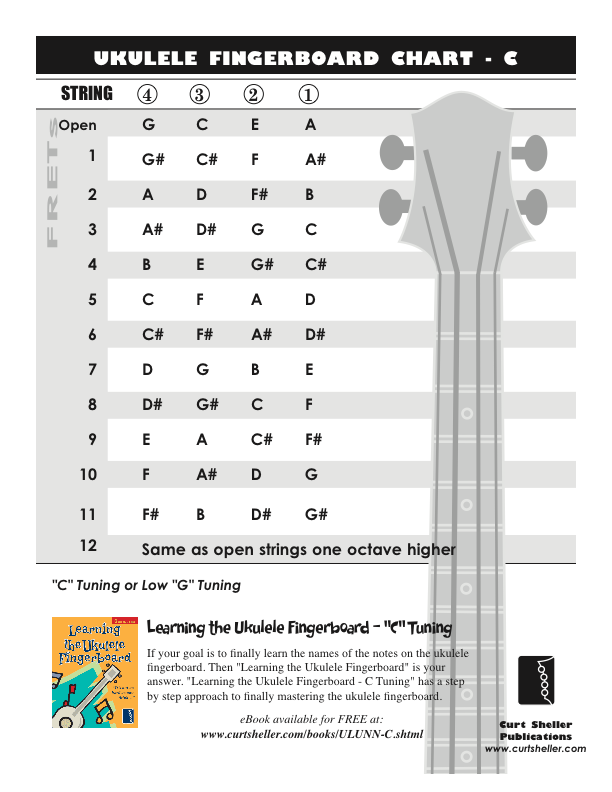
Ukulele Fingerboard Chart for C Tuning, Low or High G – G C E A
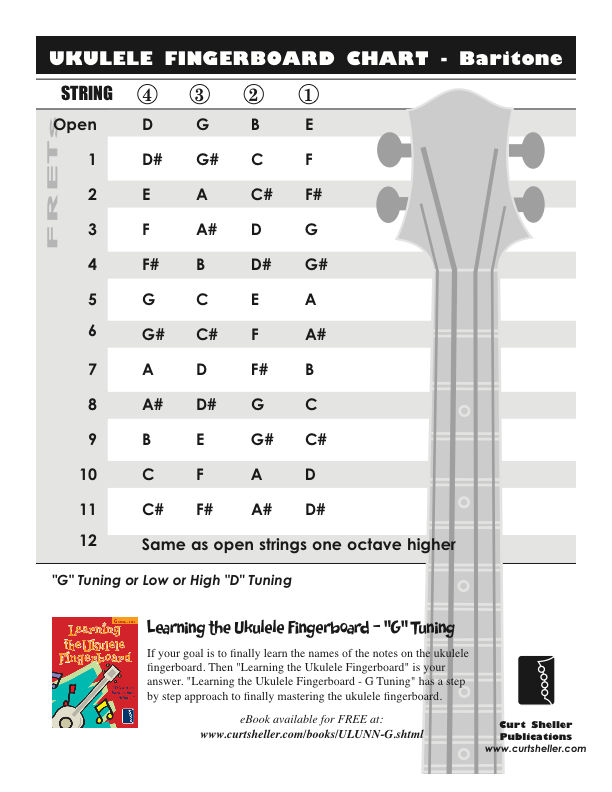
Ukulele Fingerboard Chart for G Tuning, Low or High A – D G B E
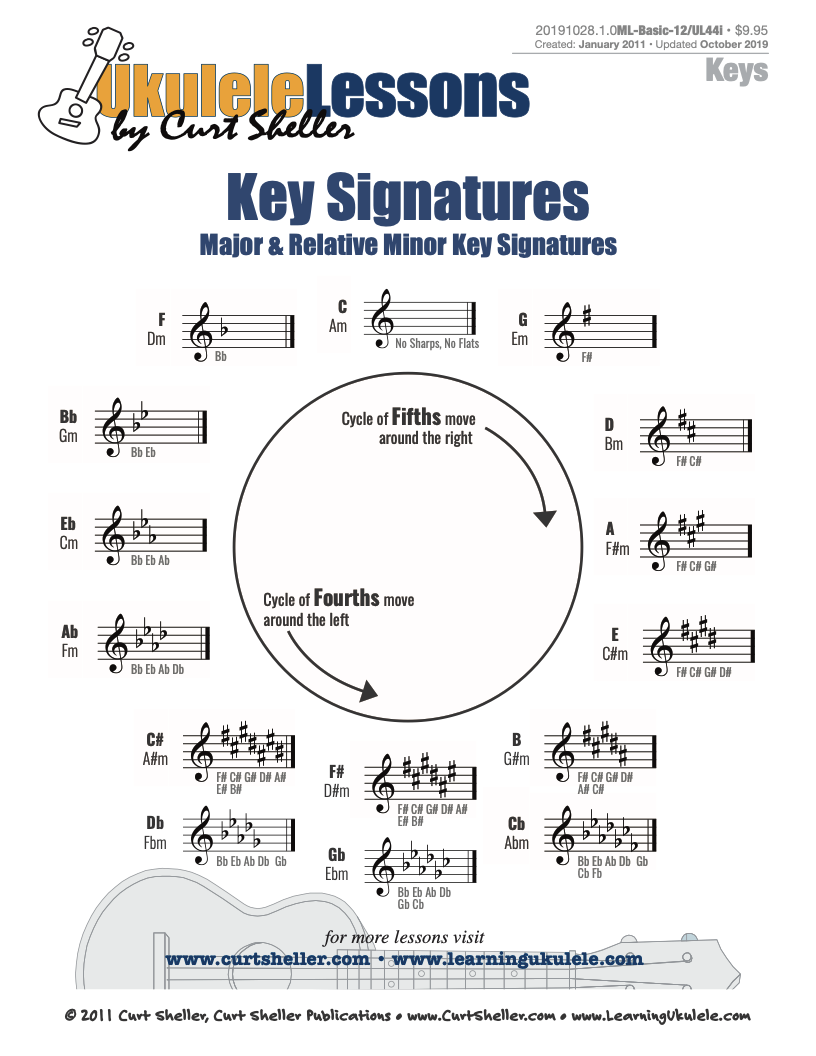
A handy reference chart of all 15 major and relative minor key signatures. US Letter 8.5 x 11 sized (ANSI-A) , A4


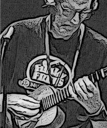
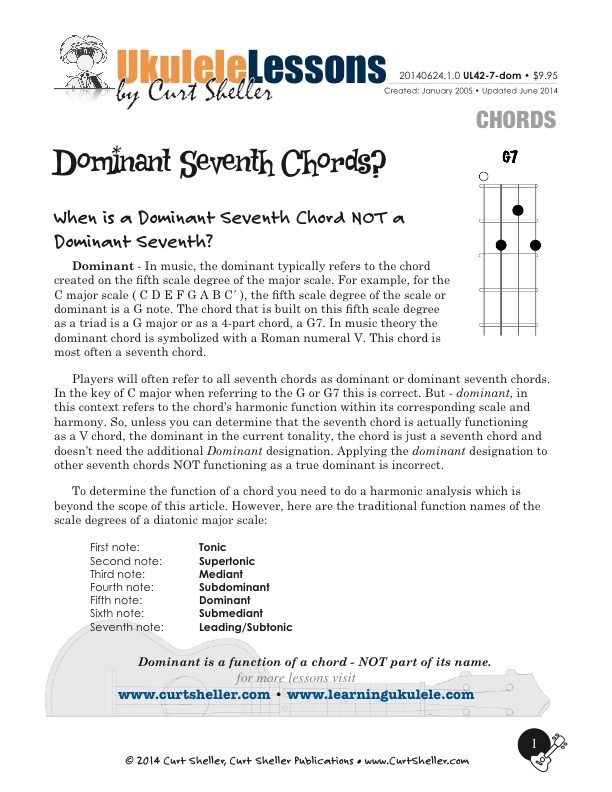
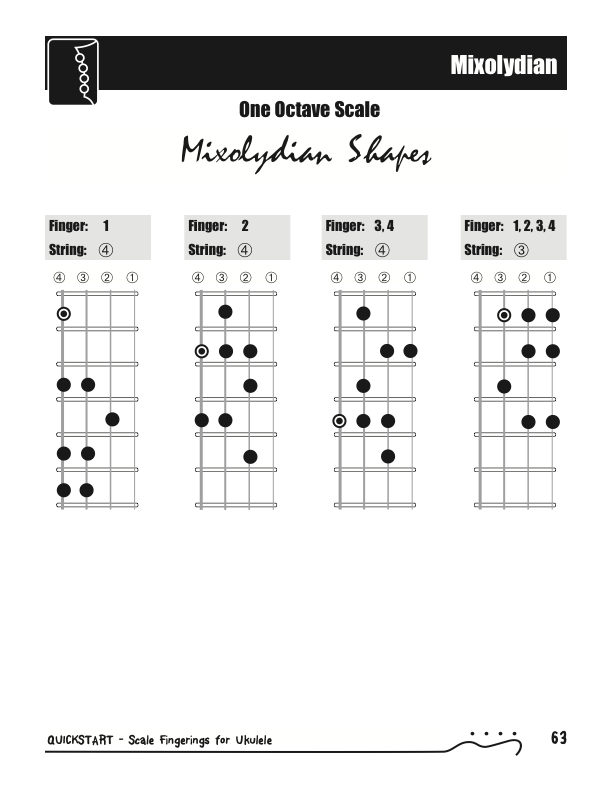

.jpg)